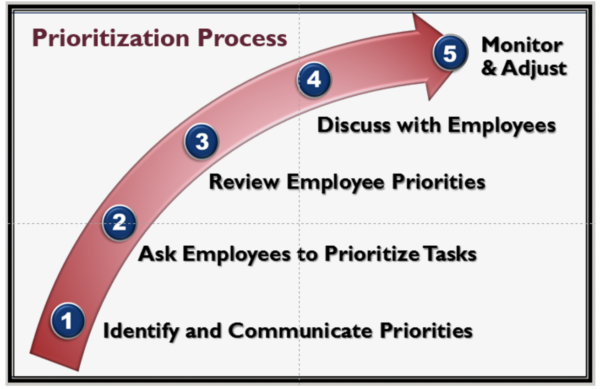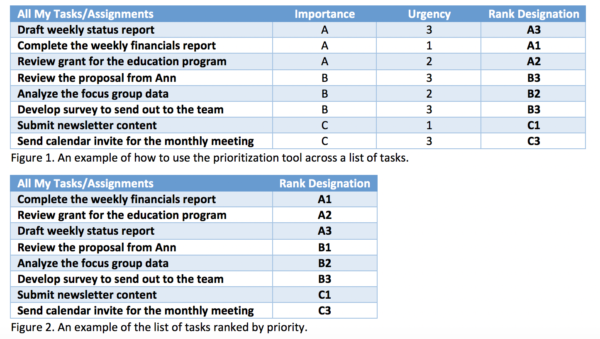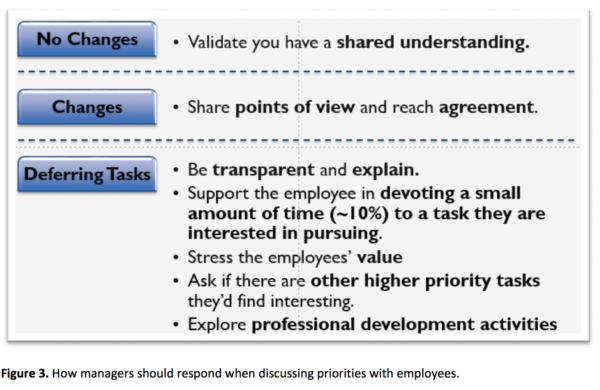How to Prioritize During Disruption
August 9, 2018 in Creativity & Disruption
By Katie Conlon
This month on the blog, we are talking about disruption in the workplace, which can be both a positive and negative for employee productivity. Harvard Business School professor, Clayton Christensen, says disruption creates something new and more efficient after displacing an existing industry or technology.1So, how can disruption be both a positive and a negative? Glad you asked! Before we dive into the positives of disruption, let’s talk about the challenges it causes, and why it can be a negative force. Disruption is both a destructive and creative process. It can either fuel your work and inspire your employees or create massive roadblocks and frustrations if not approached correctly! Disruption deals with new territory or change, so it can derail your normal day-to-day functions as people adapt to change and evolve their work. In many cases, disruption can occur organically based on a change in the business environment, meaning that there is no set plan in advance of the disruption. This requires that an organization recognize and respond to the need to support employees through this process by, most immediately by being ready to prioritize work in order to help structure and move forward through the chaos.
 We want to focus on how to prepare for and respond to disruption in the workplace by learning how to prioritize work. During a period of disruption within an organization, employees must learn how to be strategic with their work so that the change within the organization is beneficial and impactful. It can be hard to teach someone how to prioritize work without looking at each workload on a case-by-case basis, but did you know there are tools that you can apply across your workforce to make this process a little easier? At FMP, we work with clients going through periods of disruption and change management process and share prioritization tools to help managers provide practical and deployable strategies to coach employees through periods of disruption. The prioritization process follows these five main steps below:
We want to focus on how to prepare for and respond to disruption in the workplace by learning how to prioritize work. During a period of disruption within an organization, employees must learn how to be strategic with their work so that the change within the organization is beneficial and impactful. It can be hard to teach someone how to prioritize work without looking at each workload on a case-by-case basis, but did you know there are tools that you can apply across your workforce to make this process a little easier? At FMP, we work with clients going through periods of disruption and change management process and share prioritization tools to help managers provide practical and deployable strategies to coach employees through periods of disruption. The prioritization process follows these five main steps below:
Step 1: Identify and Communicate Your Priorities
If disruption makes you learn new skills or behaviors or changes your focus at work, it can pull you from the day-to-day tasks that previously commanded your time and attention. Helping your employees prioritize and stay focused during this time is important. As a manager, you should first identify the priorities for your group of employees. You should use your organization’s mission statement, strategic plan, and goals to help form the basis of your priorities. Next, you should talk to your immediate supervisor to understand how they see the priorities of your particular group or division. Once you have had these conversations, you are prepared to communicate these priorities with your employees.
Step 2: Ask Employees to Prioritize Tasks
Have your employees list all of their individual tasks and assignments they are responsible for on a day-to-day basis. Ask employees to rank the tasks by the degree of importance using A, B, or C (A=High Importance; B=Moderate Importance; C=Low Importance). Employees should ask themselves the following questions:
- Will it negatively impact other programs if not completed?
- Do other tasks depend on its completion?
- Does it contribute significantly to the overall team’s priorities?
Now, have your employees rank the level of urgency of each task using 1, 2, or 3 (1=Very Urgent; 2=Moderately Urgent; 3=Little or No Urgency). Employees should ask themselves the following questions:
- Is it overdue?
- Is it due soon?
- Does it demand immediate attention?
Finally, employees give the final rank designation by combining the degree of importance and the degree of urgency into one code (i.e., A1, A2, B1, B2, B3) and then sort list by letter, then number to get a prioritized list.
Keep in mind that as you plan your time to achieve your priorities, consider the “level of effort” each task may require. Tasks with lower levels of effort might be considered “quick hits”, so you may be able to complete them quickly!

Step 3: Review Employee Priorities
Sit down and review each employees’ priority list from Step 2. Does it match up with the goals of your division or group? Does it match up with the larger goals of the organization? Do any priorities need to be deferred? Does the list represent a reasonable workload for the employee? Too much? No enough? After you have looked at each list, look at all the priority lists together and determine if the collective efforts of the team contribute to the completion on your priorities. Do you need to shift workloads now that you can see everyone’s priority list? Managers should also consult with their peers and leadership to seek perspectives on team priorities. As a manager, you are the guide helping your employees navigate disruption and you need communicate how you view the big picture when it comes to prioritizing tasks around goals.
Step 4: Meet with Employee to Discuss Priorities
Next, managers should meet with employees one on one to review their priority list. Have a conversation with your employee to make sure you are both on the same page. Don’t hesitate to explain why you think a task should be elevated, and reinforce the employee’s value to the division or group. It’s also important to allow the employee to devote a small amount of time to a task they are interested in pursuing. This allows the employee to explore professional development opportunities while still continuing to prioritize the tasks that are critical to the role.

Step 5: Monitor and Adjust
In some cases, disruption is temporary because it is just the impact of introducing change, but in other cases, considering work differently is disruptive, even if it results in long-term improvements. Prioritization is an ongoing process and the list may have to be adjusted as time goes on or new projects are added. If a priority shifts, make sure to communicate that to the employee and explain the change and how it will impact the employee and their priorities. Finally, encourage employees to come to you if the priorities do not seem achievable or they’re having trouble managing the workload. If this is the case, lower priorities might be taking a disproportionate amount of time, and it would be a good time to revisit the tool.
Disruption doesn’t have to be overwhelming or distracting from an employee’s tasks. Employees can learn to be strategic during a time of disruption in order to still accomplish the tasks at hand. Prioritization is a way to make sense of the chaos and still complete the required tasks. Disruption often leads to creativity and a change for an organization to capitalize on innovative ideas. Creativity is a positive outcome from disruption. Don’t miss next week’s blog where we focus on creativity and the benefits it can provide to your organization.
About the Author: When Katie isn’t working on executive development programs, developing human resource solutions for organizations, or writing Instagram captions for FMP, you can find her at the dog park with her best bud, Griffin, or catching up on the latest celebrity gossip.

Reference:
1Caroline Howard. (2013, March 23). Disruption Vs. Innovation: What’s the Difference.Retrieved from https://www.forbes.com/sites/carolinehoward/2013/03/27/you-say-innovator-i-say-disruptor-whats-the-difference/#2c5b3ce86f43